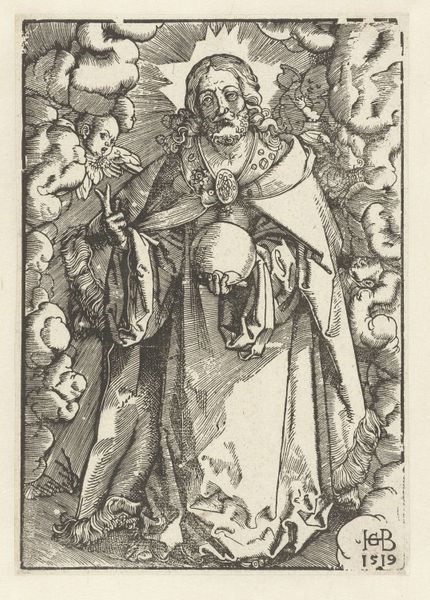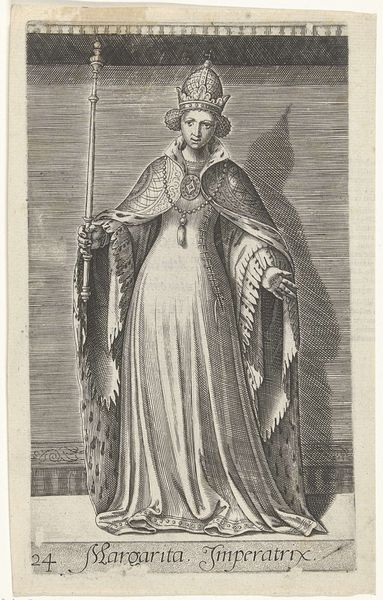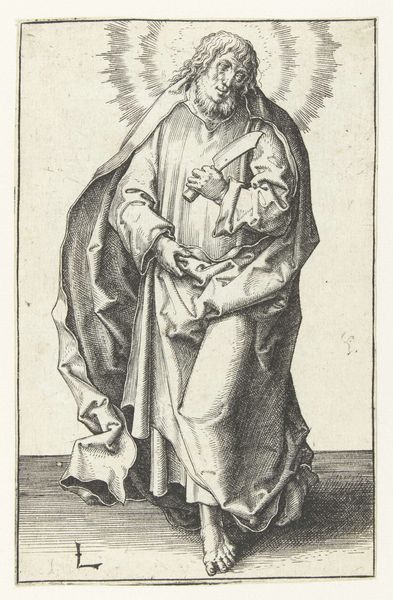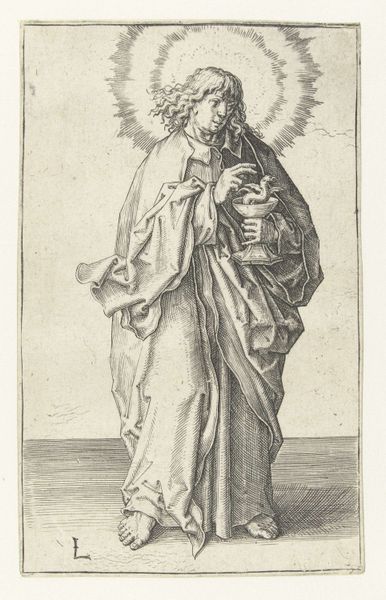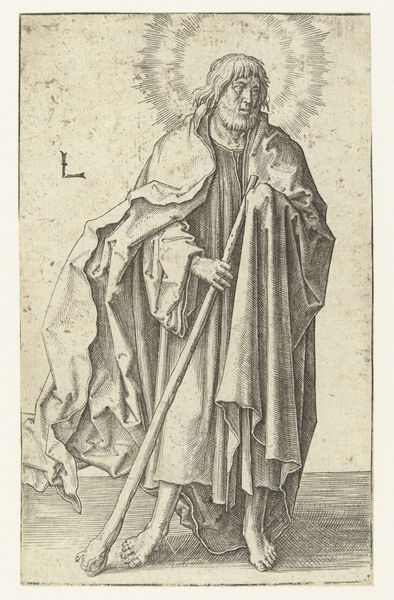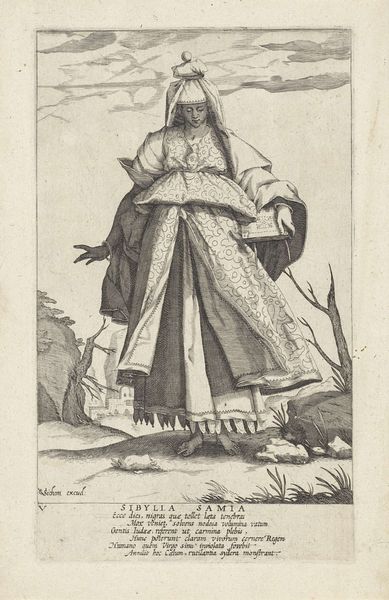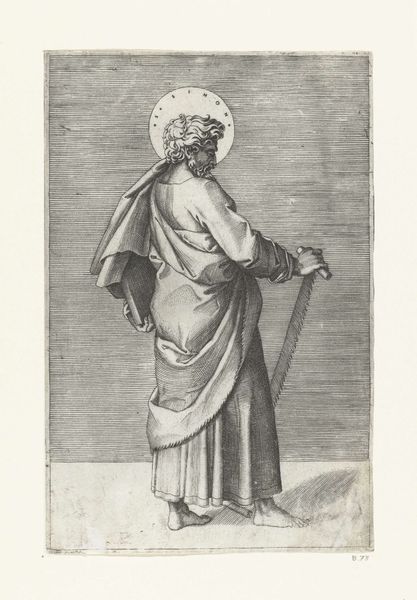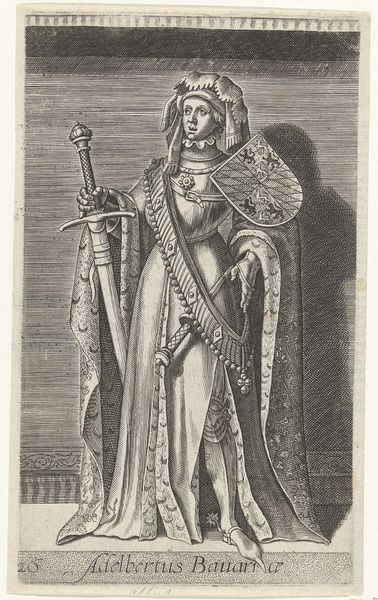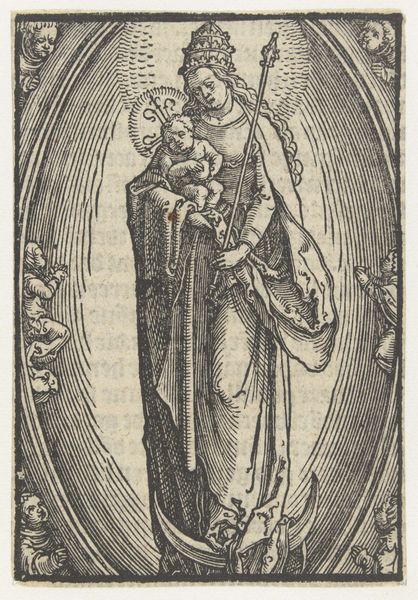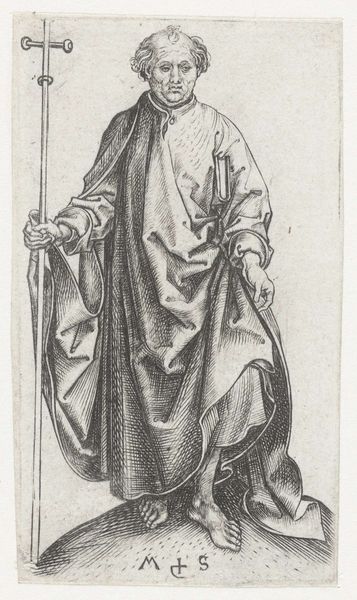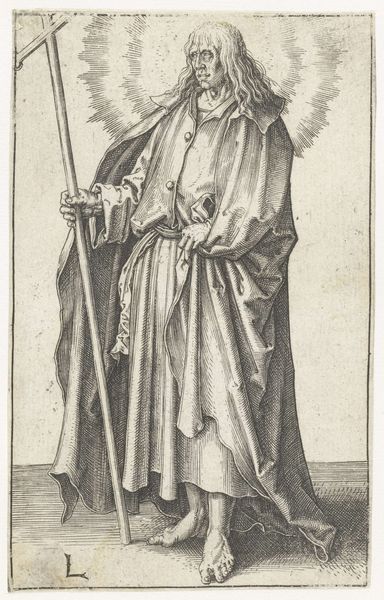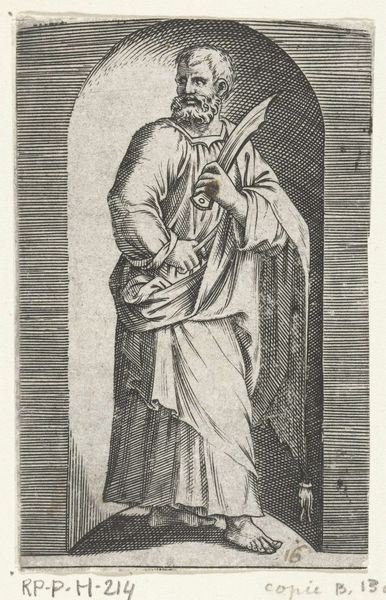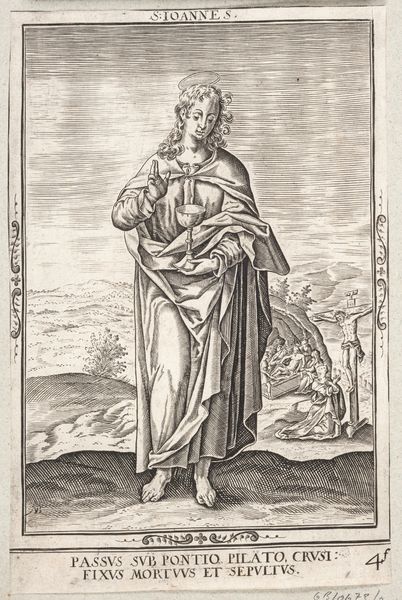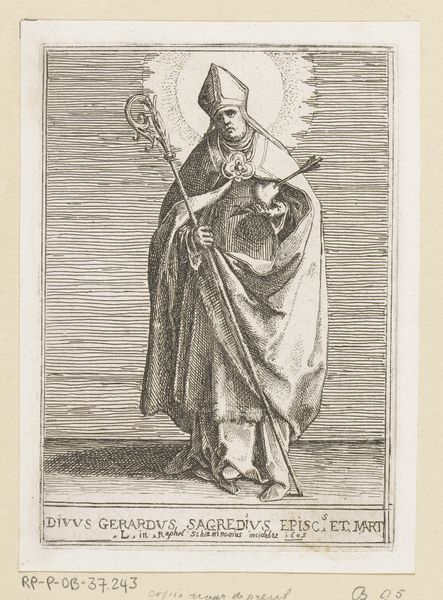
print, engraving
#
portrait
# print
#
old engraving style
#
mannerism
#
history-painting
#
northern-renaissance
#
engraving
Dimensions: height 206 mm, width 120 mm
Copyright: Rijks Museum: Open Domain
Curator: My first thought is how much this image looks like an illustration from a storybook, or maybe a medieval manuscript brought to life. It's an engraving, all sharp lines and careful details. Editor: And with that storybook feel in mind, let's delve into some context. Here we have a print, from 1578, made by Philips Galle. It's titled "Portret van Geertruida van Saksen, gravin van Holland en Dirk V", depicting Gertrude of Saxony, Countess of Holland, and Dirk V. Curator: So, a power couple portrait! Except he's a kid. Was that...normal? The way he’s holding onto her cloak feels oddly protective given the apparent age gap, or maybe that's just what happens when someone of the day has to rule. Is that what we are really looking at here: power? It seems cold and unmotherly somehow. Editor: In many ways it is, but we also need to recognize that portraiture back then, especially for royalty and the elite, wasn't about capturing some casual moment of familial love. These images served to document lineage, dynastic strength, and status. Gertrude, as Countess, had a vital role in ensuring the continuation of power through succession. Even with someone this young. The symbolism, the regalia, it all works to assert authority. Think about that ornate cloak, heavy jewelry, the little feathered hat! Each communicates power and lineage in a time of both prosperity and political unrest. Curator: All very stiff and formal and calculated...still! Is there space for Gertrude? A real human being and perhaps not a prop in the play of masculine strength? We’ve only been looking at the painting in terms of Dirk and the dynasty! Editor: A key aspect of Mannerism, which strongly informs this piece, is how it flattens perspective. See how the background recedes so minimally? It all funnels back toward Gertrude. Galle presents her not as a woman but as an immutable signifier of power and influence within a very specific historical moment, a figure larger than the individual person who actually lived. That actually seems rather subversive, doesn't it? Curator: Absolutely. The piece is powerful, both technically and conceptually. There’s something inherently political in choosing a mother and son to center authority. Editor: For me, the appeal lies in those meticulous details, rendered with the care that could only make something feel both immediate and of a different era all at once.
Comments
No comments
Be the first to comment and join the conversation on the ultimate creative platform.
